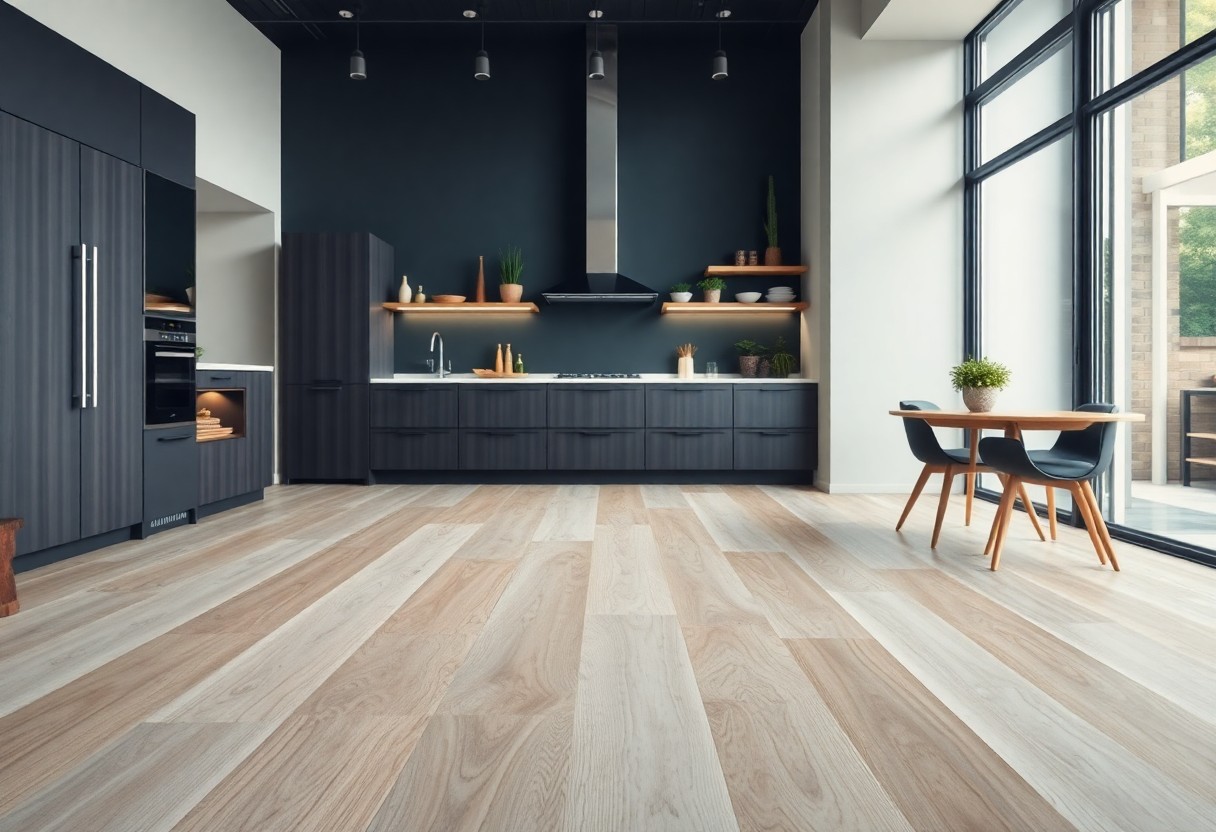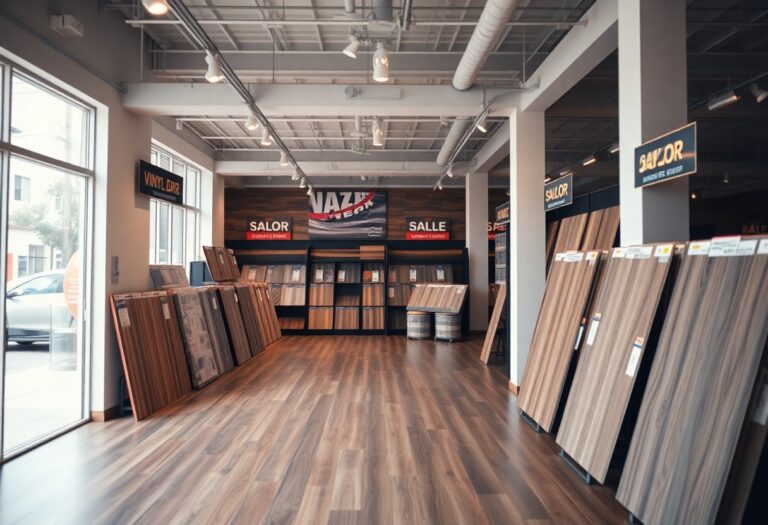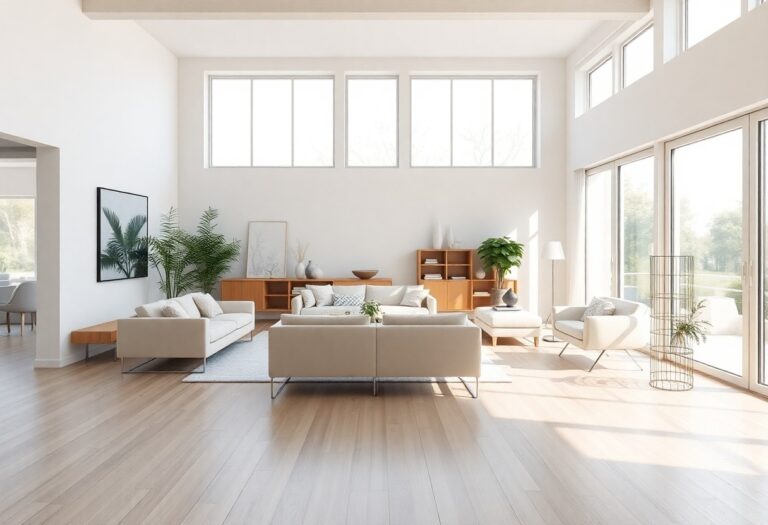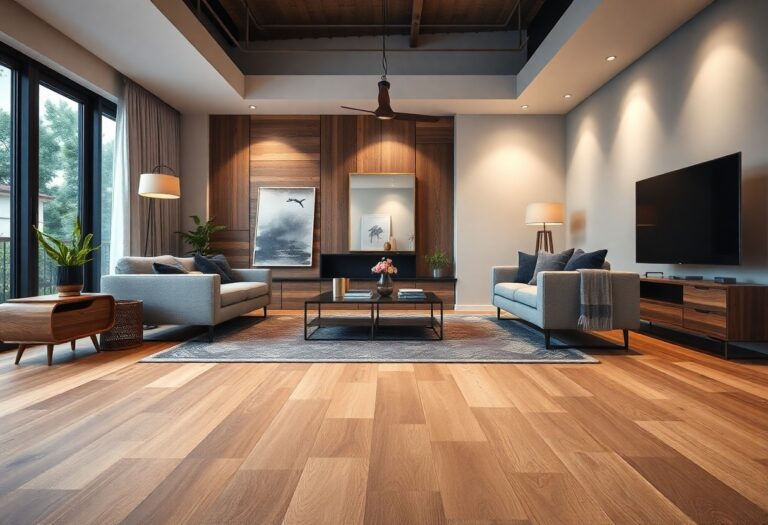It’s necessary to understand the differences between laminate and SPC vinyl flooring, especially if you’re considering a flooring upgrade in your Kitchener home. This post addresses 12 frequently asked questions that will equip you with the knowledge you need to make an informed decision. You’ll find answers that clarify installation processes, maintenance tips, and the benefits of each flooring type, allowing you to choose the best option for your lifestyle and budget.
The Great Debate: Laminate vs. SPC Vinyl
Choosing between laminate and SPC vinyl flooring can feel daunting as both options provide distinct advantages tailored to various lifestyles and preferences. While laminate offers a traditional wooden look at a budget-friendly price, SPC vinyl stands out with its waterproof capabilities, making it suitable for moisture-prone areas like kitchens and bathrooms. Each flooring type has its own unique characteristics, so considering your specific needs is necessary in making the most informed decision.
Core Material Composition: What Sets Them Apart
Laminate flooring typically comprises a high-density fiberboard (HDF) core, while SPC vinyl features a stone-plastic composite core, creating a stark contrast in durability and water resistance. The HDF core provides stability and can absorb minor impacts but is susceptible to moisture damage. In contrast, SPC’s core is engineered for resilience, providing superior performance in wet environments, making it less prone to warping and swelling over time.
Performance Under Pressure: Durability and Wear Resistance
In terms of durability, SPC vinyl flooring leads the pack with its highly robust construction, able to withstand heavy foot traffic and resist scratches. Laminate, while durable, is more vulnerable to impacts and does not handle moisture well. Opting for higher-quality laminate can enhance its longevity, but for households with pets or children, SPC vinyl’s superior wear resistance truly shines, effectively maintaining its appearance for years.
SPC vinyl flooring boasts an impressive wear layer thickness, often measuring between 20 to 30 mil. This thickness significantly contributes to its scratch, stain, and scuff resistance, making it ideal for busy households. On the other hand, laminate typically has a wear layer between 8 to 12 mil, making it suitable for moderate use but more prone to visible wear over time in high-traffic areas. If longevity and performance in tough conditions are top priorities for you, SPC vinyl flooring is likely the better choice, providing peace of mind in even the most active environments.
Maintenance Unveiled: Which Flooring Wins?
Maintenance is a key factor when determining which flooring option suits your lifestyle. Laminate flooring is generally easier to clean with just a damp mop and mild detergent, while SPC vinyl is resistant to water and stains, requiring minimal upkeep. Both options provide durability, but if you prioritize low-maintenance cleaning and a water-resistant environment, SPC vinyl may be your best bet.
Cleaning Challenges: Time Investment vs. Effort
When considering cleaning, laminate often requires more time due to its susceptibility to scratches and moisture damage, necessitating careful handling. SPC vinyl, with its robust composition, allows you to simply wipe up spills without worry. This difference means that while you may invest more effort in maintaining laminate, SPC vinyl offers convenience at a reduced time investment.
Long-Term Care: Lifespan and Replacement Costs
Lifespan and replacement costs play significant roles in your flooring decision. Laminate may last 15-25 years under proper conditions, whereas SPC vinyl can easily exceed 25 years, making it a more durable investment. If replacement is needed, SPC vinyl typically involves lower costs than laminate, especially considering its lifespan and reduced risk of damage over time.
For instance, the average pricing for laminate flooring installation can range from $1.50 to $3.00 per square foot, with potential replacement in a decade or two if wear and tear occur. In contrast, SPC vinyl not only boasts a lifespan of over 25 years but can cost around $2.50 to $5.00 per square foot, including installation. The long-term savings could be considerable, especially in high-traffic areas of your home, where durability and maintenance needs can drive overall costs higher for laminate. This clear cost-benefit analysis can guide your decision when investing in flooring that makes sense for your home.
Aesthetic Appeal: Design Flexibility Explored
Aesthetic appeal plays a significant role in your flooring choice, as it sets the atmosphere of your space. Both laminate and SPC vinyl flooring offer a wide range of design flexibility, allowing you to choose styles that harmonize with your interior decor. You can create a modern, rustic, or traditional environment simply through your flooring selection, enhancing your home’s overall appeal while catering to your unique tastes.
Visual Variety: Patterns, Colors, and Finishes
Trends in Interior Design: Matching Your Style
Installation Insights: DIY vs. Professional Help
The decision to install laminate or SPC vinyl flooring yourself or hire a professional often depends on your comfort level with home improvement tasks and the scope of the project. DIY installations can save you money and give you a sense of accomplishment, but potential challenges such as uneven subfloors or precise measurements may necessitate professional expertise. Experienced installers ensure your flooring is correctly laid, reducing the risk of defects and future repairs.
Ease of Installation: What You Need to Know
Laminate and SPC vinyl flooring are designed with user-friendly installation systems like click-lock or glue-down options. If you have basic tools and a little patience, tackling a DIY project is within your reach. Instructions are typically included, and online tutorials can further guide you through the process, making it approachable for many homeowners.
Cost Implications: Budgeting for Projects
Considering both the cost of materials and labor is imperative when planning your flooring project. If you opt for a DIY installation, you’ll save on labor costs, which can range from $1 to $3 per square foot, depending on your location and the complexity of your installation. However, hiring professionals ensures a quality finish—an investment that may pay off in durability and aesthetic value.
Budgeting effectively encompasses the total expense of materials, any necessary tools, and if you work with professionals, labor costs can significantly impact your overall project budget. On average, laminate flooring ranges from $0.80 to $2.50 per square foot, while SPC vinyl may go from $2 to $5 per square foot. Consider adding around 10% for waste and extra costs, especially if you’re tackling a large area. Ultimately, weigh the time and effort against prospective savings to determine what aligns with your financial and lifestyle goals.
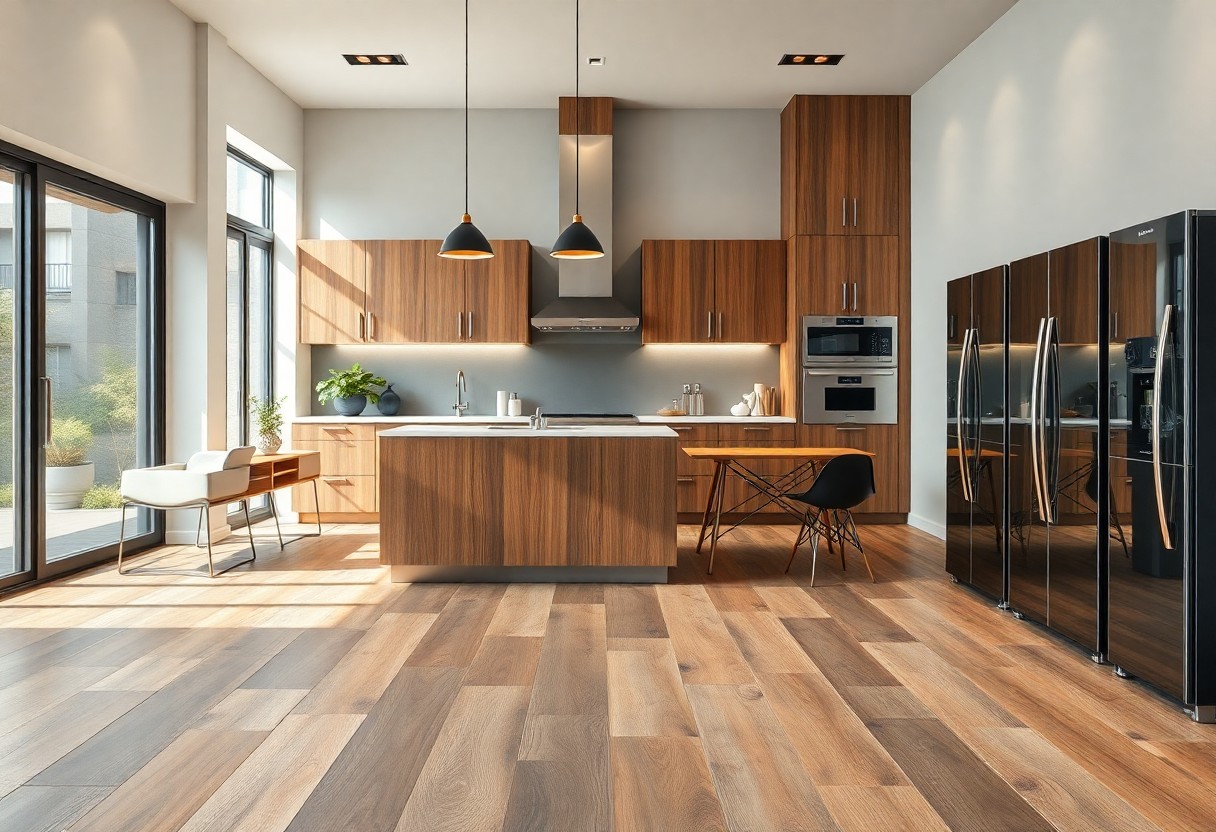
Environmental Impact: Sustainability Considerations
Your choice of flooring can significantly affect the environment, so understanding the sustainability of laminate and SPC vinyl flooring is necessary. Both options have varying degrees of eco-friendliness, with manufacturers evolving their practices to minimize their carbon footprint. When considering these materials, look for products that are produced using renewable resources, low VOC (volatile organic compounds), and those that contribute to healthier indoor air quality.
Manufacturing Processes: Eco-Friendly Practices
In the production of laminate and SPC vinyl flooring, many manufacturers are adopting eco-friendly practices that reduce waste and energy consumption. For instance, some laminate products use recycled wood fibers, while SPC vinyl is often made from virgin materials with less environmental impact. By choosing brands that emphasize sustainable sourcing and responsible production methods, you can help support a greener industry.
End-of-Life Options: Recycling and Disposal
At the end of its life, your flooring choice should also consider sustainability. Laminate flooring is less recyclable than SPC vinyl, which can often be repurposed into new products. Though both materials typically end up in landfills, choosing brands that promote recycling programs and providing take-back options can enhance their eco-friendliness even after use.
Exploring end-of-life options is vital, as many consumers overlook the importance of how flooring materials can be disposed of or recycled. SPC vinyl generally has better recycling prospects, as it can be ground down and incorporated into new flooring or various construction materials. Some manufacturers even have specific programs that ensure your old flooring is recycled properly, thus reducing waste. If you plan ahead and choose products with established recycling options, you can significantly lessen the environmental impact from your flooring choice when it’s time for an upgrade.
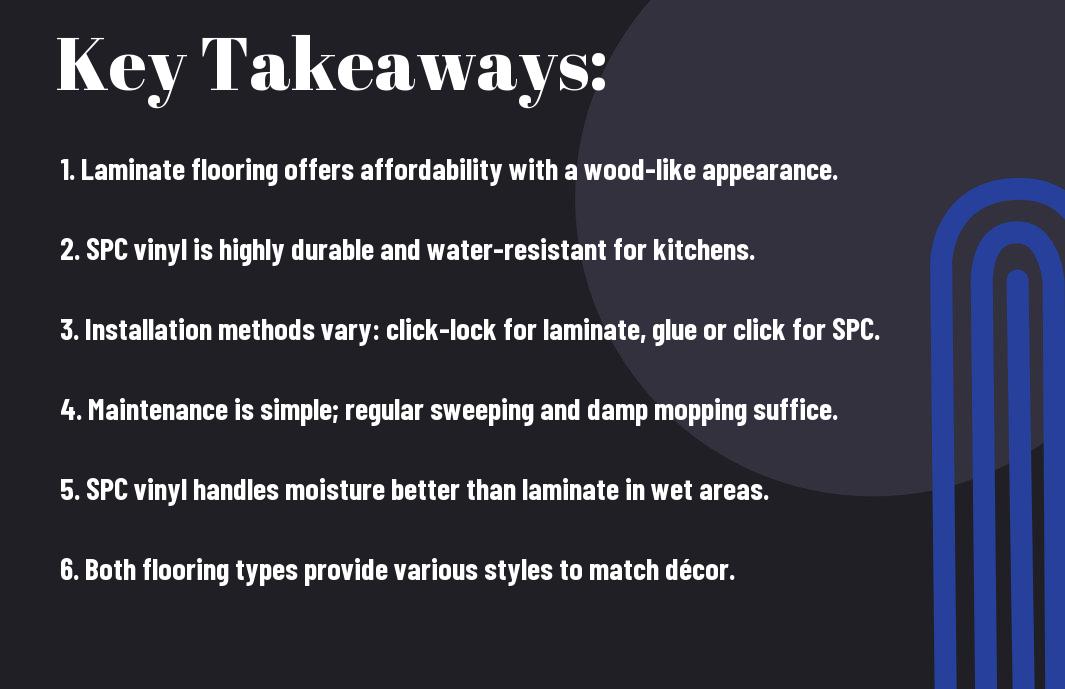
To wrap up
Upon reflecting on the 12 frequently asked questions about laminate and SPC vinyl flooring in Kitchener, you now have a clearer understanding of how these flooring options can benefit your home. Whether you’re considering durability, maintenance, or aesthetics, knowing the key aspects will help you make an informed decision tailored to your needs. By exploring these common inquiries, you can confidently navigate your flooring choices and enhance your living space with the right materials.


